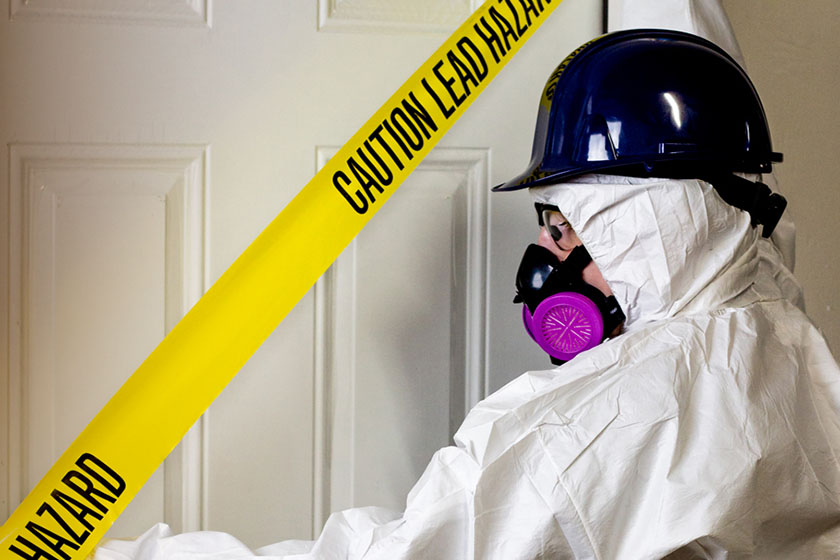Lead Crimes
In my last article, I talked about lead hazards including some of the health effects from lead overexposure. In this issue, I’ll discuss the “crime;” that is, some notable recent legal happenings in the world of environmental lead.
EPA Enforcement Activity
The Federal Environmental Protection Agency (EPA) has stepped up lead enforcement since the Renovation, Repair, and Painting (RRP) rule took effect in April 2010.
Numerous legal actions, some with large fines, have been levied against contractors and property managers that have improperly handled lead paint hazards in housing.
Here are three examples of criminal cases that the EPA filed, so you can be aware and avoid repercussions (and/or forward this email to someone else who might benefit):
- A rental property owner who was responsible for building operation and maintenance agreed to pay $10,000 to resolve violations of the RRP rule. The complaint alleged that workers violated the rule by improperly using power equipment to remove paint from the exterior surface of an 1850’s apartment building in Rockland, Maine. The complaint also alleged that the workers had not received any training under the rule and that the company was not qualified to do the work. Because the lead dust had not been properly contained, the residents were potentially exposed to lead contamination.
- A contractor agreed to pay $1,500 to resolve violations from failing to follow the RRP rule during a window and siding replacement project at a home in Edison, N.J. The contractor failed to contain renovation dust, contain waste, and train workers on lead-safe work practices.
- A property management firm leased 50 residential units numerous times and failed to notify tenants about the potential presence of lead paint and lead-based paint hazards, as required by the Real Estate Notification and Disclosure Rule. The property management firm was fined $24,600.
As illustrated in the above examples, the EPA and State of California are taking lead based paint violations very seriously. Contractors and property management firms should be aware of the requirements. I’ll discuss these requirements in part three of Get the Lead Out.
The Lead – Crime Link
Recently there has been research that has led scientists to believe that there has been a societal impact of lead exposure. Specifically, what has been termed the “Lead-Crime hypothesis.” The basic hypothesis is that childhood exposure is linked to criminal acts later in life. This isn’t that far-fetched as it is known lead exposure increases aggression in lab animals and irritability in humans. Researchers are beginning to tease out some of the mechanisms by which it might trigger violence in humans.
Specifically, in a recent study conducted in Cincinnati, 250 adult members of a group known to have been exposed to lead in childhood had been arrested a total of 800 times. In, addition, composite MRI brain images of about 160 members of the show that childhood exposure causes gray matter loss (pictured: orange areas), especially in frontal areas of the brain.
Meanwhile, crime rates in inner cities have appeared to drop in correlation with the elimination of lead from gasoline (1973), the decrease of the use of lead-based paint (1978), and the implementation of aggressive programs that lessen the chance of exposure, especially for children. Generally speaking, children born mid-to-late 1970’s grew up with less lead in their bodies than children born earlier. At the same time, a large crime drop occurred during the 1990’s.
We may never really know if environmental lead is truly responsible for higher crime rates, but it is an intriguing theory.
Next Month’s Article: Part 3 of Get the Mold Out – The Solution. What Realtors and Property Managers need to Know to Deal With Lead-Based Paint Issues.








2 Comments
While I believe lead in children under six is toxic at low levels, the general alarm is….alarmism.
I do worry about the work I performed as an employee in the eighties. Refacing cabinets, we would sand down all the paint on the kitchen cabinets down to the wood. No matter how we would tape up the plastic, a film of paint dust would end up throughout the house. Imagine the scene: the early eighties, the fine lead based dust entering every space of the home, while another worker would be using solvent based contact cement….enough to blow up the kitchen if the pilot lights were on…. usually one with a cigarette hanging out of their mouth…..formaldehyde particle board dust, and the open faced boards enclosing the oven…….all on a 95 degree, three stage 1982 smog alert.
I have lately wondered about the people who were small children in the homes back then, ……as I go trail running every day training for the senior Olympics, which I qualify for the nationals…….and I used to have asthma as a kid, and drank to much all through the eighties. What does this crazy mingling of sentences mean? Well, perhaps I am lucky. But, I did quit smoking in 1986, and rarely drink.
Point 2. I just got my insurance canceled for my rental houses in a courtyard because of peeling paint on the outside. The painting is in mid job as they inspected….. this is where the pendulum has swung to far the other way.
I think you are right that there is a lot of over-reaction, just like there is to asbestos. The truth is usually somewhere out there in the middle. There’s some pretty good toxicology on lead, so there’s no doubt it can be harmful to people, but of course this depends on a number of factors, including the actual dosage of lead they actually get into their body. The government sets the bar pretty low, because they are protecting all populations in housing settings, especially children who are much more susceptible to the ill effects of lead exposure.